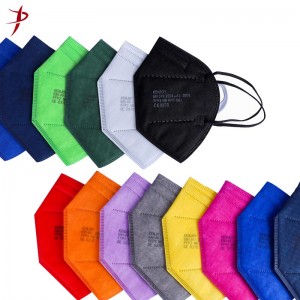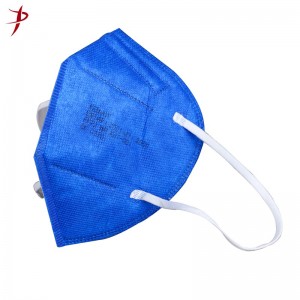Classification of medical masks| KENJOY
There are many kinds of medical masks. We can divide them into three categories. What are the three categories? Now the medical face mask wholesale tells us the following.
Medical FFP2 masks are mainly made of one or more layers of nonwoven fabric. The main production processes include melt-blown, spunbond, hot air or needling. It is resistant to liquids, filtering particulate matter and bacteria. It is a medical protection textile.
Medical masks can be divided into medical protective masks, surgical masks and ordinary medical masks according to their performance characteristics and application scope.
Medical protective mask
The utility model relates to a close-fitting self-priming filter medical protective device, which is suitable for the protection of medical personnel and related staff, and has a high protection grade, and is especially suitable for patients who are exposed to respiratory tract infection diseases transmitted by air or near droplets in the process of diagnosis and treatment. It can filter out particles in the air and block droplets, blood, body fluids, secretions, etc. It is a disposable product. Medical masks block most bacteria, viruses and other pathogens, and the WHO recommends that health care workers use anti-particulate masks to prevent viral infections in hospital air.
According to the technical requirements of GB19083-2003, the main technical indexes of medical protective masks are filtration efficiency and airflow resistance with or without oil particles.
Specific indicators are as follows:
1) Filtration efficiency: when the air flow rate is (85±2)L/min, the filtration efficiency is not less than 95%, that is, the aerodynamic median diameter of N95(or FFP2) and above (0.24±0.06)μm(0.24±0.06). Airborne transmission can be prevented by infectious agents 5μm in diameter or by close contact with infectious agents transmitted by droplet.
2) Suction resistance: under the above flow conditions, the suction resistance shall not exceed 343.2Pa (35mmH2O).
3) There should be no technical indicators such as permeability on the inside of the mask under 10.9Kpa(80mmHg) pressure.
4) The mask must be equipped with a nose clip, made of plastic material, length > 8.5 cm.
5) synthetic blood should be sprayed at 10.7kPa (80mmHg) into the mask sample. There should be no infiltration inside the mask.
surgical mask
The mask of medical operation is mainly used for basic protection of medical personnel or related personnel, as well as protection measures to prevent the transmission of blood, body fluid, splashing and so on, with certain protective effect. It is mainly worn in clean environment below level 100,000, working in operating room, nursing patients with low immunity, performing body cavity puncture and other operations. Medical masks can block most bacteria and viruses to prevent infection of medical staff, and also prevent the microorganisms carried in the breath of medical staff from being discharged directly out of the body, posing a threat to the patient. Surgical masks are required to be more than 95 percent effective at filtering bacteria. Disposable surgical masks should also be issued to patients with suspected respiratory diseases to prevent infection threats to other hospital staff and reduce the risk of cross-infection, but the effect is not as good as medical protective masks.
Important technical indicators include filtration efficiency, bacterial filtration efficiency and respiratory resistance.
Specific indicators are as follows:
1) Filtration efficiency: Aerodynamic median diameter (0.24±0.06)μm sodium chloride aerosol filtration efficiency is not less than 30% at air flow rate (30±2)L/min.
2) Bacterial filtrate efficiency: the filtration efficiency of Staphylococcus aureus with average particle size of (3±0.3) micron should not be less than 95%, the bacterial filtration rate ≥95%, and the filtration rate of non-oily particles ≥30%.
3) Respiratory resistance: under the condition of filtration efficiency flow, inspiratory resistance shall not exceed 49Pa, and expiratory resistance shall not exceed 29.4Pa. When the pressure difference △P between the two sides of the mask is 49Pa/cm, the gas flow rate should be ≥264mm/s.
4) Nose clip and mask strap: The mask should be equipped with a nose clip made of plastic material, the length of the nose clip should be greater than 8.0cm. The mask belt should be easy to wear and remove, and the breaking strength of each mask belt should be greater than 10N at the connection point of the mask body.
5) penetration of synthetic blood: after 2ml of synthetic blood is sprayed on the outer side of the mask at 16.0kPa (120mmHg), there should be no penetration on the inner side of the mask.
6) Flame retardant performance: Use non-flammable materials for the mask, and burn for less than 5s after the mask leaves the flame.
7) Ethylene oxide residue: the ethylene oxide residue of sterilized masks should be less than 10μg/g.
8) Skin irritation: the primary irritation index of mask materials should be less than or equal to 0.4, and there should be no sensitization reaction.
9) Microbial index: total number of bacterial colonies ≤20CFU/g, coliform bacteria, Pseudomonas aeruginosa, Staphylococcus aureus, hemolytic streptococcus and fungi shall not be detected.
Common medical mask
General medical masks are designed to block spillage from the nose and mouth and can be used single-use in general medical Settings with the lowest level of protection. For general health care activities, such as sanitary cleaning, liquid preparation, bed cleaning units, isolation or protection of particles other than pathogenic bacteria, such as pollen, etc.
According to the relevant registered product Standards (YZB), the filtering efficiency of particles and bacteria is generally not required, or the filtering efficiency of particles and bacteria is lower than that of surgical masks and medical protective masks. The 0.3-micron-diameter aerosol can only achieve 20.0%-25.0% protection effect, which cannot achieve the filtering efficiency of particles and bacteria. Can not effectively prevent pathogen from respiratory tract invasion, can not be used in clinical traumatic operation, can not play a protective role on particles and bacteria and viruses, can only play a mechanical barrier role on dust particles or aerosols.
Different application occasions
Medical protective masks:
The utility model is suitable for occupational protection of medical personnel in contact with patients with air or droplet transmitted diseases. It is generally recommended to be replaced within 4 hours in isolation wards, intensive care units, fever clinics and other special places.
Surgical masks:
It is suitable to be worn by medical personnel in medical clinics, laboratories, operating rooms and other invasive or demanding environments to prevent blood, body fluid spatter and foam transmission, and blood epidemic prevention is needed on its outer surface. Go to public places, do not touch patients, should wear a surgical mask;
Disposable medical masks:
It is used in general health care for people with low risk and has the lowest protection level. It is limited to playing a certain mechanical barrier effect on dust or aerosol and is worn in the case of small population density.
The above is a brief introduction of medical masks. For more information about medical masks, please contact our medical face mask manufacturers to provide you with more detailed information
Learn more about KENJOY products
Read more news
Post time: Dec-07-2021



